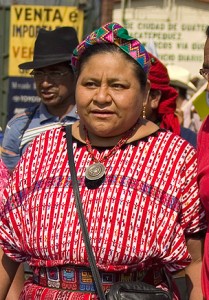 What ideological positions are embedded within the practices and conceptions that we commonly identify as religions? Depending on one’s own ideological position and perspective, various people emphasize the patriarchy, ethnocentrism, and violence within various examples of religion. People will certainly debate if those ideological positions are typical in expressions of religion or an accretion to some idealized form. What about common definitions of what counts as religion? What ideological positions are embedded there? In classes I often emphasize the ways that claiming “religion” becomes a way to establish special status for particular conceptions, symbols, or actions. You cannot use that image because it is religious. You cannot prohibit this action because it is religious. So, what counts as religious in a society makes a big difference. But our analysis should also extend to broader implications of definitions of religion and the ideological assumptions that they support.
What ideological positions are embedded within the practices and conceptions that we commonly identify as religions? Depending on one’s own ideological position and perspective, various people emphasize the patriarchy, ethnocentrism, and violence within various examples of religion. People will certainly debate if those ideological positions are typical in expressions of religion or an accretion to some idealized form. What about common definitions of what counts as religion? What ideological positions are embedded there? In classes I often emphasize the ways that claiming “religion” becomes a way to establish special status for particular conceptions, symbols, or actions. You cannot use that image because it is religious. You cannot prohibit this action because it is religious. So, what counts as religious in a society makes a big difference. But our analysis should also extend to broader implications of definitions of religion and the ideological assumptions that they support.
Elizabeth Shakman Hurd’s recent article on Al Jazeera America suggests that another ideological position, “economic liberalization,” is embedded within the constructions of religion that define (limit) the application of religious freedom. Hurd links the emphasis on promoting religious freedom in developing societies, pointing out the work of the Religious Freedom and Business Foundation, to larger business interests and conceptions of property rights. The conception of religion as being individual and focused on beliefs, for example, excludes particular conceptions of an intimate, or perhaps religious, connection between land and particular communities and a commitment (is it then cultural and not religious?) to protect that land from destruction. Thus, the notion of a tie to the land and desire to protect it among the K’iche’ (a Mayan community) is not acknowledged as a religious conception, deserving protection under the ideal of religious freedom. Hurd writes,
Legal protections for religions and religious rights are always partial, reflecting and privileging particular understandings of religion and particular conceptions of freedom. In this case, it is a religious economies model that favors consumers of religion for whom believing is taken as the defining characteristic of what it means to be religious and the right to believe (or not) as the core of what it means to be free.
In this case, Hurd emphasizes the selectivity of what counts as religion and the interests and assumptions behind that selectivity. Of course, Hurd also suggests that recognizing their cultural practices as religious would be a means to fight the big business interests monetizing and destroying lands she identifies as sacred, thus the category religion is also a tool in support of her vision of the world.
Discussions of the complexity of the constructed category “religion” are not simply an academic exercise. Conceiving religion to be about individual belief and textual proscriptions, as has been spread throughout the world over the past several centuries, correlates, in many ways, with the individualized nature of consumer capitalism. Moreover, it imposes on various communities a particular understanding of the individual self and its role in relation to that community. Those conceptions that do not correlate with the interests of private property and big business tend not to be recognized as religious conceptions worthy of protection.
Photo of Rigoberta Menchu, famous K’iche’ activist By Surizar, cropped by
Jen [CC-BY-SA-2.0], via Wikimedia Commons